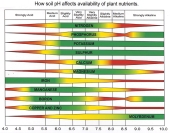posted 8 years ago
The soil in my region is clay and rocks and tends to be Basic due to limestone deposits. In a book I have on cultivating tea, it recommends PH 5.5-6.5, well drained, nigtrogen rich, and the roots of Camelias tend to need oxygen more than most other plants. The book recommends filling holes on a slope with sand, lava rock, manure, and wood chips. Lava rock and sand are cheap, I'm not worried about that. What I am worried about is the wood and manure rotting and using up the Oxygen. I'm also considering the problematic runoff ending up in my zone 1 annual gardens and zone 3 grain fields which would be downhill from the tea.
I don't have the land yet, but both of the places I'm going to see next week are on mountain sides and are close to each-other so the soil is reasonably similar based on the testing done by the realtor by my request. PH is variable, but loamy clay in bottoms and rocky clay on mountains. Lots of limestone bits and chips.
To boost acidity I have considered introduction of Lactobacillus kimchii bacteria on crop residues, oak or beech sawdust and slash for the tannic acid, and companion plants that give off acidic compounds (oak, birch, beech, hickory, fruit trees, etc).
For runoff, I am considering a swale down-slope of the tea in which a row of willows is planted. The tea itself would be in terraces inspired in shape by those in the Loess Plateau.








